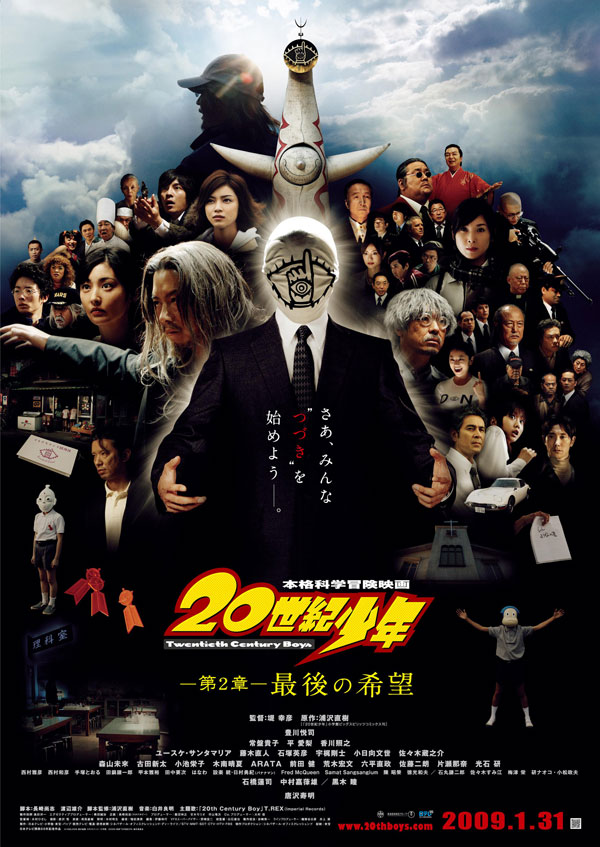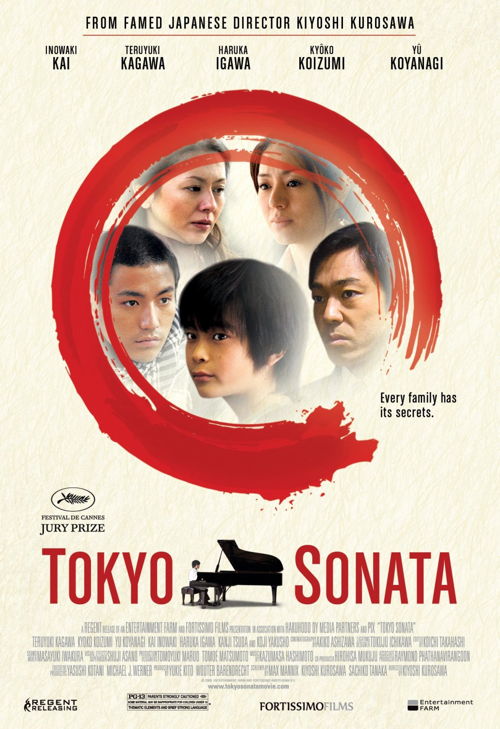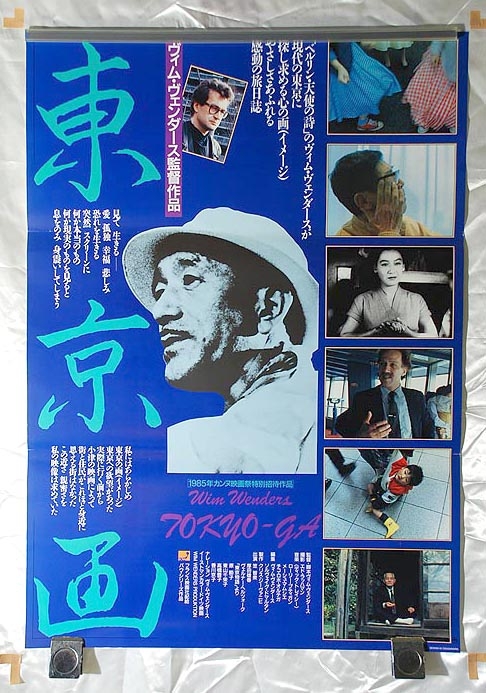I’m a big fan of manga movies. I’ve reviewed a bunch of them in my books, calling them out as among the most outrageous and deliriously enjoyable films you’re likely to encounter in the remarkable world of Asian (particularly Japanese) cinema.
However, sometimes the manga in question is so monumental and beloved, the film adaptation turns out leaden and lugubrious by comparison (see Watchmen). So intimidated is the filmmaker by the original work, so eager is he to please the fans that he becomes preoccupied with the authenticity of his rendering. He forgets that while comics are uniquely suited to film adaptation (hey, it’s a fucking storyboard), still, there are considerations to be made in regards to the medium of film. You can’t shoot every friggin’ frame! You’re better off running the risk of pissing off the purists for the sake of a good movie (see The Lord of the Rings trilogy).
So it is with 20th Century Boys, a manga by Naoki Urasawa that ran from 1999 to 2006 (later published in 22 bound volumes). It’s about a gang of snot-nosed kids who get a notebook and fill it with a fanciful story about the end of the world. Flash forward 30 years and somebody is causing the story to come true. The somebody is Friend, a mysterious cult leader who appears to have a childhood connection with the original group. The whole premise is a little half-baked if you ask me, but what do I know. The thing was huge in Japan.
The resulting film trilogy (7+ hours) met with mixed reviews but nevertheless made heaps of yen. Unfortunately, the first installment, 20th Century Boys 1: Beginning of the End (2008), didn’t really do it for me. It was quite slow to get going, only developing a decent head of steam about an hour in. The pace reminded me quite a lot of Watchmen, but I happened to have read that epic tale of post-superhero intrigue and angst, so it was far more enjoyable. For those unfamiliar with the original of either film, the experience is much diminished.
I’ve got the second film here, 20th Century Boys 2: The Last Hope (both films courtesy of my friend and fellow Asian film fanatic Dr. Stan Glick) and I’ll watch it, as I’m somewhat invested at this point. But unless things pick up dramatically, I doubt I’ll pursue the third film; that would involve a cash outlay, and I’ve got so many flicks in the to-watch pile, it’s better I just move on to the next one. Looks to be something called Chambara Striptease …
THROWBACK THURSDAY / NOIR CITY 14 (2016): Humoresque (1946)—Eddie Muller’s
Introduction
-
I first saw *Humoresque (1946)* projected large at the Castro Theatre at
the 14th edition of Noir City (2016) and never got around to transcribing
Eddie ...
15 hours ago




